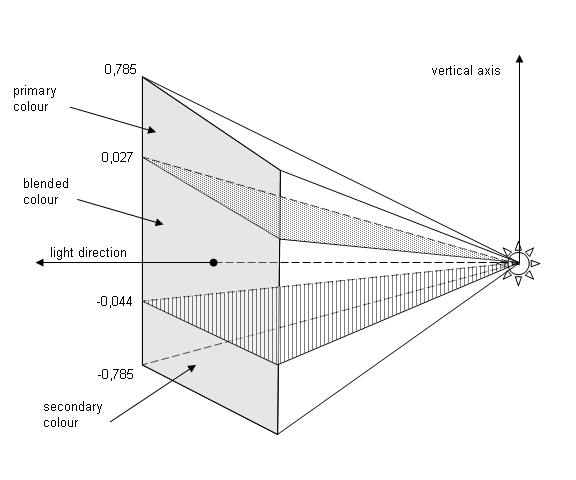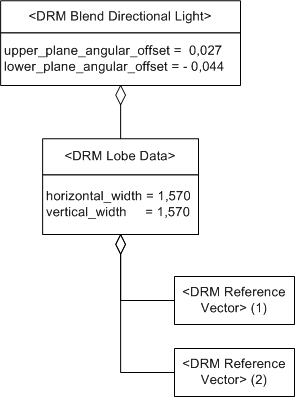Table 6.21 — DRM_Blend_Directional_Light
Property |
Description |
|||||||||
|---|---|---|---|---|---|---|---|---|---|---|
|
Class |
|
|||||||||
|
Superclass |
||||||||||
|
Subclass |
|
|||||||||
|
Definition |
An instance of this DRM class specifies a <DRM Directional Light Behaviour> instance, the intensity of which varies depending on the position of the observer relative to the light’s location, direction, and shape. This light takes the shape of a pyramid, subdivided by two planes. These planes are based at the apex of the pyramid and extend towards the base. They subdivide the pyramid into upper, blend, and lower sections. If the observer is in the upper section, the primary colour is displayed. If the observer is in the lower section, the secondary colour is displayed. If the observer is in the blend section, the colour displayed is a proportional blend of the primary and secondary colours as defined below. NOTE The positive and negative ends of the VERTICAL_AXIS vector correspond to upper and lower, respectively. The upper_plane_angular_offset field specifies, in radians, the angular offset of the plane separating the upper and blend sections of the pyramid. The offset is measured from the given LIGHT_DIRECTION vector of the <DRM Lobe Data> instance along the VERTICAL_AXIS vector of the <DRM Lobe Data> instance. The lower_plane_angular_offset field specifies, in radians, the angular offset of the plane separating the blend and lower sections of the pyramid. The offset is measured from the given LIGHT_DIRECTION vector of the <DRM Lobe Data> instance along the VERTICAL_AXIS vector of the <DRM Lobe Data> instance. The upper_plane_angular_offset shall be greater than or equal to the lower_plane_angular_offset. Both planes shall be within the pyramid defined by the given <DRM Lobe Data> instance. The colour used to display the light is computed as follows. Let:
Then:
|
|||||||||
|
Class diagram |
||||||||||
|
Inherited field elements |
|
|||||||||
|
Field elements |
|
|||||||||
|
Default field values |
||||||||||
Associated to (one-way) (inherited) |
|
|||||||||
Associated to (one-way) |
|
|||||||||
Associated by (one-way) (inherited) |
|
|||||||||
Associated by (one-way) |
|
|||||||||
Associated with (two-way) (inherited) |
|
|||||||||
Associated with (two-way) |
|
|||||||||
Composed of (two-way) (inherited) |
|
|||||||||
Composed of (two-way) |
|
|||||||||
Composed of (two-way metadata) (inherited) |
|
|||||||||
Composed of (two-way metadata) |
|
|||||||||
Component of (two-way) (inherited) |
|
|||||||||
Component of (two-way) |
|
|||||||||
|
Constraints |
||||||||||
|
Clarifications |
1The <DRM Lobe Data> component specifies the lobe shape. |
|||||||||
|
Example(s) |
|

